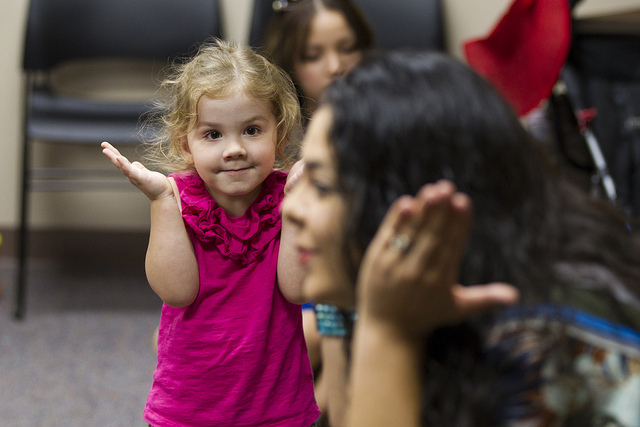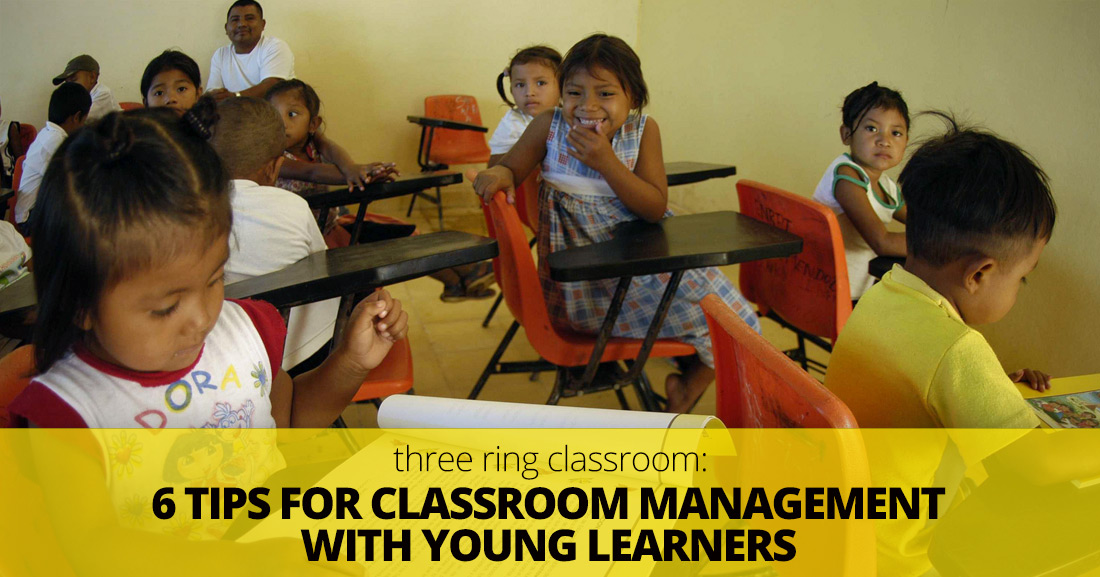How would you describe your classroom?
Is it lively? Sedate? Serious? Free? There is no perfect way to set up an ESL classroom, especially when kids are involved. Much of making your classroom a success comes from your own personality as well as the personalities of your students. And most likely a little bit of trial and error. But there are some qualities the best classrooms have in common and that you can make work for you.
6 Tips for Classroom Management with Young Learners
-
1
Let Your Students Move
Kids have to move. Though the trend for many years has been to keep students seated behind desks for the majority of their day, recent events are bringing that idea into question. Schools are finding that more recess actually improves student learning rather than hindering it and that more time behind desk isn’t necessarily productive. Letting students move at school isn’t a new concept.
Noted educator Dr. Maria Montessori believed that children could not learn unless they were moving, and she developed an educational system based on that idea.
Noted educator Dr. Maria Montessori believed that children could not learn unless they were moving, and she developed an educational system based on that idea. That’s not to say your classroom has to be just like hers. It won’t be. But if you want to give your young students the best learning experience they can have, you will have to let them move. Movement can be more than just going out for recess. You can let students move around the classroom and interact with objects and move their bodies all as they learn the English language. The teaching method Total Physical Response is based on the idea of linking movement with language learning. All this to say, don’t expect your students to sit at their desks all day. Getting them moving in your ESL class will actually improve their learning efforts no matter exactly how you do it.

-
2
Know and Cater to Your Students’ Learning Styles
You probably know at least something about the three major learning styles – visual, aural, and kinesthetic. All students tend to gravitate toward one of them. But the best teachers in the best classrooms are aware of what type of instruction best benefits their students, and they are intentional about connecting with those styles. When I plan, I prefer to go beyond the standard three learning styles and look to Dr. Howard Gardner’s multiple intelligences. I think about each type of learner – intrapersonal, interpersonal, logical/mathematical, musical, spacial, bodily/kinesthetic, and linguistic. And then I try and have activities that appeal to each of those styles of learning. When you are consciously including activities for each of these learning styles in your classroom, you will find that your students are more engaged, more interested. They participate and don’t get distracted or distract others as much. This is the perfect formula for helping them learn and keeping your classroom environment conducive to learning.
-
3
Be Over Prepared
The Boy Scout motto may be “Be Prepared”, but the teacher of young students should make “Be over prepared” their mottos. Nothing is worse for keeping kids in a learning state of mind than dead time in the classroom. It doesn’t matter if it’s three minutes or thirty, a room full of students with nothing to do and no direction is a recipe for disaster. That’s why the best teachers always have several activities ready to go at a moment’s notice. It’s rare that your planned activities will take exactly the amount of time that you anticipate, even for the most experienced teachers. That’s when those ready to go activities are life savers. Plan to have three to five no prep activities ready to pull out of your back pocket at any point during the day to avoid that killer of concentration, dead time.
-
4
Encourage Your Students to Be Independent Learners
Another way to ensure you don’t have dead time in your classroom is to offer students independent learning stations. Not only do they fill empty classroom time, they make students more accountable for their own learning, and that’s another quality of a well-managed and effective classroom. Students are independent learners. If you aren’t familiar with learning stations, they are activities that are set up and available throughout your classroom that students can do on their own with little to no direction. You can have learning stations on just about every aspect of language. You may allow students to choose freely among the offered stations or require them to use certain stations over a certain period of time (for example, use each station once in a one week period of time). Whatever you do, make sure students have freedom to choose what they are doing. They will naturally gravitate to the areas they enjoy in language learning, but that’s okay. They will be independent learners who are internally motivated to learn, and that makes them less dependent on your external motivation. It also makes them less dependent on the rewards you give (such as good grades) and gives them self-satisfaction in a job well done.
-
5
Keep in Mind Your Students’ Attention Span
Did you know that in young children, their attention span in minutes is equal to their age in years? That means a five year old child will have an attention span of around five minutes. Of course there are exceptions to this, but these numbers tend to be more the rule than the exception. That means that the younger your students are, the more you need to change up the activities you do in class. To keep your kids interested, you’ll have to move from one activity to the next quickly and smoothly (without dead time between). This goes back to my earlier point of being over-prepared. It also stands as a reminder not to get frustrated with students when they lose interest in an activity you are doing in class, especially if it goes longer than they are able to concentrate. You cannot expect from children what you can expect from adults when it comes to staying focused on an activity.
-
6
Repeat Activities
Sometimes when I repeat activities in class, I feel like I am cheating, like my students can’t possibly find value in an activity we have already done in class. But then I remind myself that children like repetition. In fact, they find security in it. That’s why they like to watch the same movies and television shows over and over and why so many families have worn out their Frozen soundtracks. Kids like to do things they have done before. So you shouldn’t be hesitant about doing an activity in class that you have done last week or even yesterday. Your kids will love it. Not only that, but they may also learn more and complete the activity more successfully because they are familiar with the directions and the material.
No teacher has the perfect classroom.
But these six tips, if you implement them in your classroom, will make your days less chaotic and more conducive to student success.
P.S. If you enjoyed this article, please help spread it by clicking one of those sharing buttons below. And if you are interested in more, you should follow our Facebook page where we share more about creative, non-boring ways to teach English.








